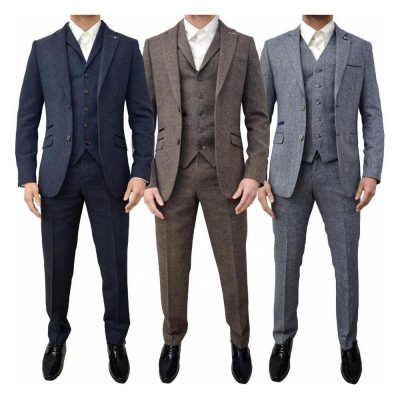Customized suits have been generally accepted, and more and more people choose tailor-made suits. As the demand for suit customization increases, some small workshops also accept suit customization orders. Some are simply changing the size of the ready-made garments after giving them a try. This is also called custom tailoring, but this is not really traditional custom tailoring. What is truly traditional custom tailoring?
Suit customization
There are no ready-to-wear garments for you to try on in a truly traditional tailor-made suit shop. What you see is mostly fabric. The master will first communicate the dressing requirements with the guests, recommend suitable fabrics for the guests to choose, confirm the style, and make tailoring. Tailoring is not only to obtain data points such as waist circumference and bust circumference, but also to master the wearer’s body trend, dressing habits, body problems, and even walking posture through this step. The next step is cutting and plate making. The plate making here is not mass production after a plate making like an assembly line. This plate making is a plate making. The plate making is carried out according to the size measured by the master for you, and then it is made for customers to try on. Wool-like clothes, wool-like clothes are the kind of semi-finished products that we often see covered with white threads, with sleeves on one side and no sleeves on the other. This is for the convenience of adjusting the sleeve shape, sleeve cage and other details. The process of sewing a suit takes a week. During this week, tailors sew the customer’s suit by hand, stitch by stitch, including buttonholes, side lines, and lapels. They must be sewn by hand.
The steps of suit customization are very cumbersome, in order to be able to make a truly fit suit for the customer.




















